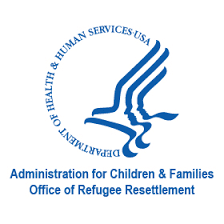The U.S. Department of Health and Human Services’ (HHS) Office of Refugee Resettlement (ORR) is legally required to provide for the care of unaccompanied children (defined below), who are referred to ORR until they are appropriately and safely placed with a vetted sponsor. In response to increased reports regarding labor exploitation of children released from ORR custody, HHS has partnered with the U.S. Department of Labor (DOL) to improve information sharing and collaboration and has joined DOL’s inter-agency task force to combat child labor exploitation. HHS has committed to several activities to support this partnership. This document includes an update on these efforts to mitigate child labor exploitation, including HHS’s partnership with DOL, and technological and programmatic improvements. In addition, ORR proactively initiated an internal audit of vetting practices related to sponsors who sponsored three or more children to whom they were not related. This document summarizes the audit’s scope, key findings, and recommendations as part of ORR’s commitment to continuous quality improvement.
I. BACKGROUND
Statutory Authority
On March 1, 2003, the Homeland Security Act (HSA) transferred responsibilities for the care and placement of unaccompanied children from the Commissioner of the Immigration and Naturalization Service at the U.S. Department of Justice (DOJ) to the Director of ORR at HHS. The HSA defines an unaccompanied alien child (referred to by HHS as an unaccompanied child) as a child who has no lawful immigration status in the United States; has not attained 18 years of age; and, with respect to whom, there is no parent or legal guardian in the United States, or no parent or legal guardian in the United States is available to provide care and physical custody. ORR must operate the Unaccompanied Children (UC) Program consistent with its statutory authorities and in compliance with the 1997 Flores Settlement Agreement (FSA). The Trafficking Victims Protection Reauthorization Act of 2008 (TVPRA) added several requirements relating to unaccompanied children, including the requirement that other executive branch departments and agencies expeditiously transfer unaccompanied children to ORR’s care and custody within 72 hours of determining them to be unaccompanied, absent exceptional circumstances. In most cases, referrals to HHS come from the U.S. Department of Homeland Security (DHS). When ORR receives a child, the child is placed in a shelter or facility that is part of a network operated by ORR contractors and grantees. ORR makes placement decisions utilizing the least restrictive setting that is in the best interest of the child and giving consideration to additional factors, including: keeping sibling groups intact, special needs of the child, danger to the child, danger to the community, and risk of flight. Since the program’s inception in March 2003, ORR has incorporated child welfare best practices when making placement, clinical, case management, and release decisions for the more than 600,000 children who have been in ORR custody. ORR’s custodial responsibility ends when a child is released from ORR care. ORR does not have the legal authority to remove a child from a home once a placement has been made and relies on local or state child welfare agencies to consider allegations of abuse or neglect and take appropriate actions, as that authority rests with them.
Sponsor Placement
As soon as a child is transferred to ORR’s custody, ORR works to identify and ultimately place the child with a vetted sponsor in the United States who is capable of caring for the child’s physical and emotional well-being in a safe and healthy environment. Consistent with the requirements of the FSA, ORR seeks to place children in the following order of preference: parent or legal guardian (Category 1), close relative (Category 2), more distant relative (Category 3), and only if those individuals are not available, a non-relative sponsor, typically a friend of the child’s family (also Category 3). Children who do not have a suitable sponsor are considered Category 4 and remain in the care of ORR long-term. ORR is able to place most children with a sponsor, usually a parent or a close relative. ORR attempts to contact the parent of every unaccompanied child upon entry into the care of ORR to help inform the child’s service plan and to obtain potential sponsor information. This includes parents in the United States as well as those in the child’s country of origin. When a child is not placed with their parent, often, a child’s parent communicates their intent as to who their child’s sponsor should be. More information regarding sponsor categories and placement can be viewed in ORR’s UC Policy Guide.1 ORR’s sponsor suitability assessment requirements vary by sponsor category and are based on the potential sponsor’s relationship to the child. The suitability assessment requirements can include verifying the potential sponsor’s relationship to the child, if any; conducting separate interviews with the child, the child’s family, and the potential sponsor; filling out a sponsor application; conducting address checks and reviewing supporting documentation; conducting background checks, including public records checks, sex offender registry checks, and, in many cases, DOJ Federal Bureau of Investigation (FBI) fingerprint checks, child abuse and neglect registry requests, and home studies, as required by law or ORR policy. Third party reviews are conducted by an independently contracted case coordinator prior to case managers making recommendations to a federal field specialist regarding release, or a possible need for a home study. Additionally, sponsors are scheduled to attend a Legal Orientation Program for Custodians, administered by a DOJ contracted legal service provider to learn about the sponsor’s responsibility to ensure the child appears for their immigration proceedings and the sponsor’s responsibilities to protect the child from mistreatment, exploitation, and trafficking.

